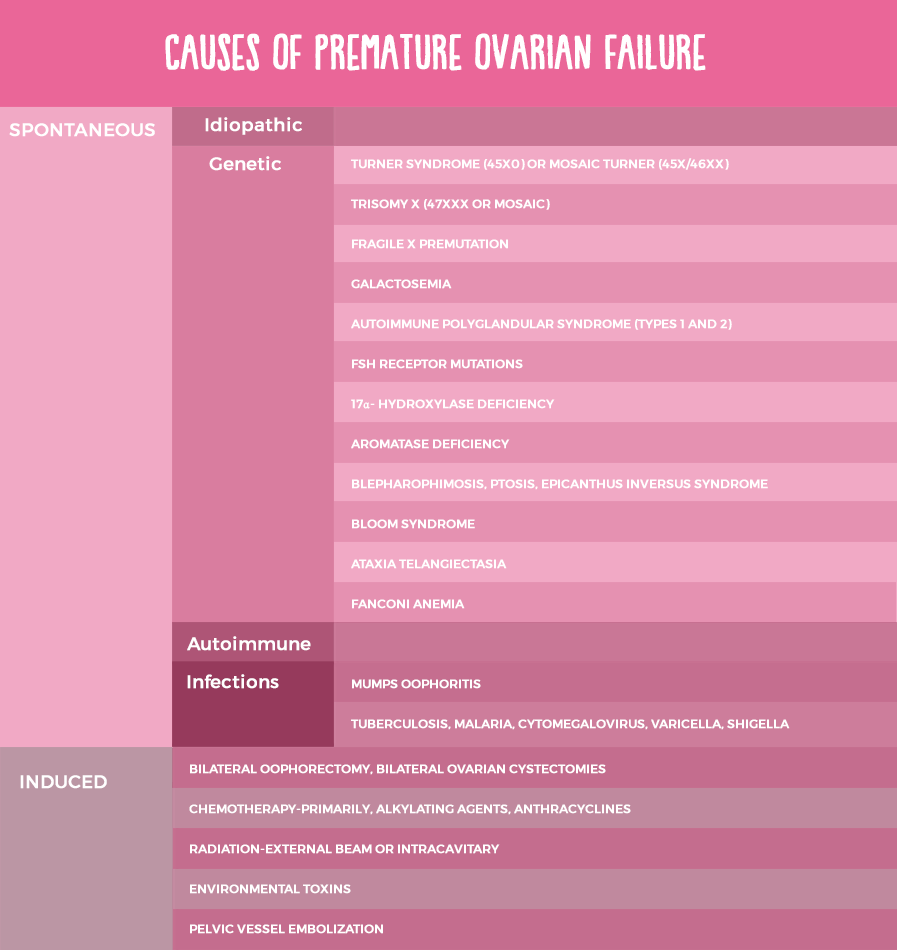Premature ovarian failure Causes
A complex, heterogeneous and not fully characterized entity
Premature ovarian failure causes have not yet been fully elucidated.
Despite ongoing efforts, this condition still appears a complex, heterogenous and not fully characterized entity.
In more than 90% of cases no etiology is defined, and POF is called “idiopathic”, that is “with no apparent known cause”.
However, it is known that this phenomenon can depend on genetic, endocrine, paracrine, mitochondrial dysfunction-related, and metabolic factors affecting the quality of follicles and oocytes.
Moreover, also chemotherapy, radiotherapy and surgery can contribute to premature ovarian failure; in particular, a proposed mechanism for chemotherapy toxicity is an indirect effects via cells surrounding oocyte (stroma and granulosa cells). Finally, autoimmune responses have been associated to premature ovarian failure too.
Premature ovarian failure can reflect inherently small primordial follicles (the most immature follicles in a woman’s ovary) or ovarian reserve, or an accelerated destruction of oocytes due to genetic, autoimmune or toxic causes.
Genetic forms of premature ovarian failure account for 20 to 25% of cases. Genes influence both the size of the primordial follicle pool and the age at menopause, and play a role in determining the rate of follicles breakdown.
Moreover, more than 20% cases of POF are associated with autoimmune conditions. Graves’ or Hashimoto’s disease are the most common ones; among others are Addison’s disease and type I diabetes. That is why anti-thyroid and anti-adrenal antibody screening is recommended in case of suspected autoimmune etiology or of idiopathic POF. Anti-ovarian antibodies are commonly detected, but their testing is not recommended because of poor prognostic relevance and highly variable interpretation.
In pre-menopausal women, surgical premature ovarian failure is the leading cause of hormone deficiency. In particular, ovaries can be removed during hysterectomy for both benign and malignant conditions.
In case of chemotherapy or radiation, the level of ovarian damage depends on several factors, including woman’s age at the time of the therapy, the type of damaging agent, and treatment dose.
Finally, a variety of viral and bacterial infections have been associated with premature ovarian failure. However, in the majority of cases normal ovarian function resumes after the remission of the infection.
But early menopause can also be a spontaneous event experienced by 0.3-1.1% of reproductive-age women. Its incidence steadily increases with advancing age, being recognized in 0.01%, 0.1% and about 1% of women younger than, respectively, 20, 30 and 40 years old.


